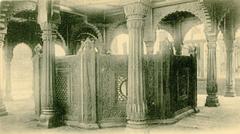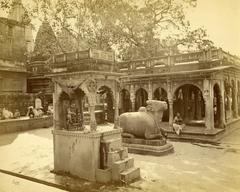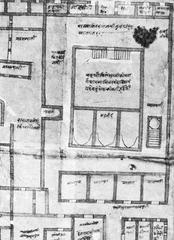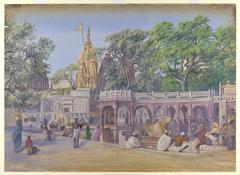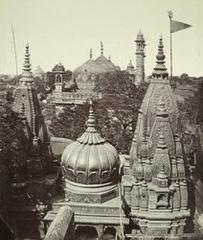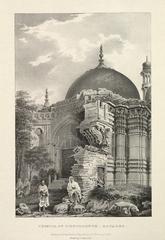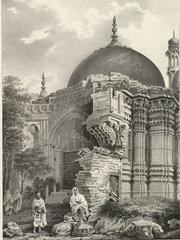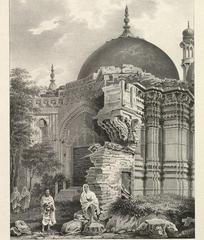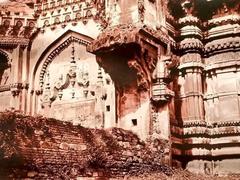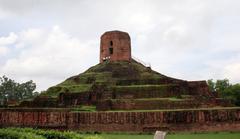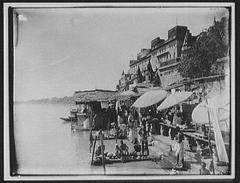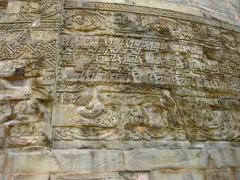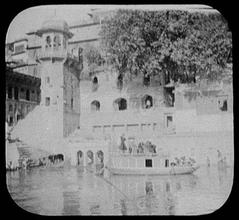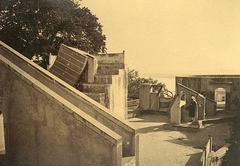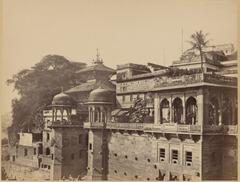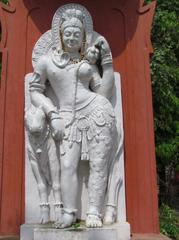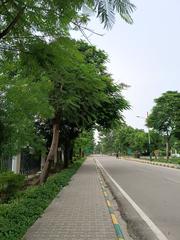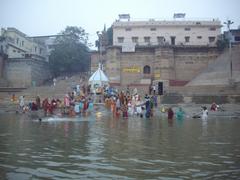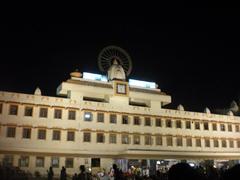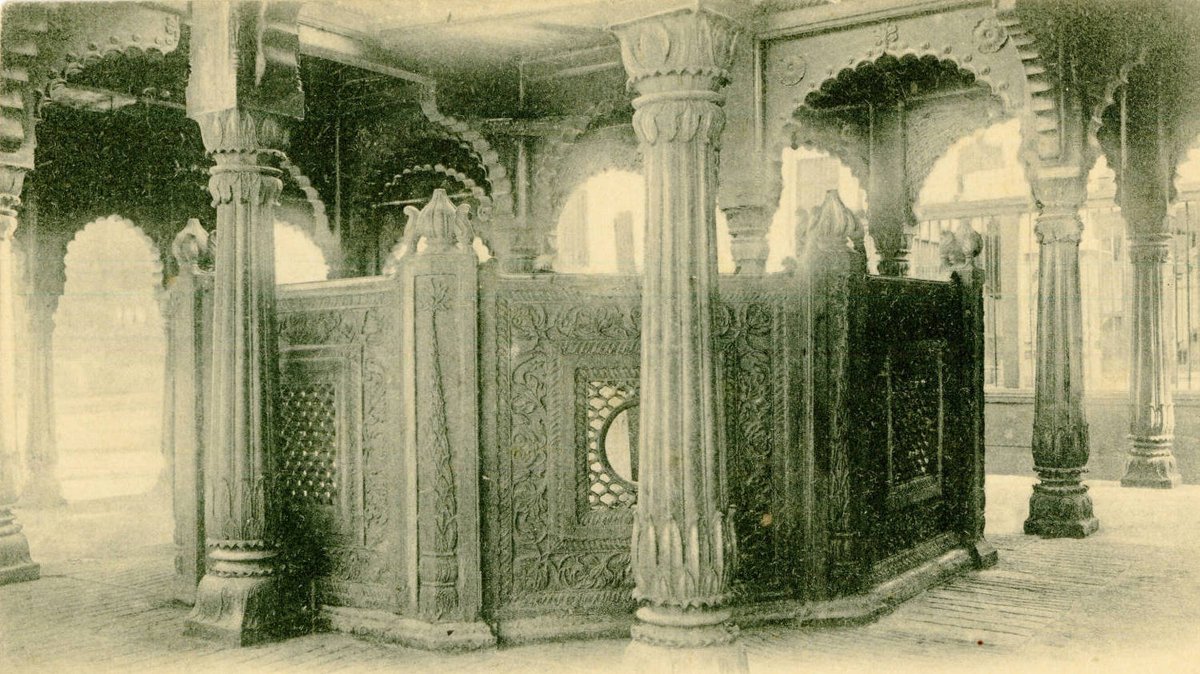
Gyanvapi Mosque: Visiting Hours, Tickets, and Historical Significance in Varanasi
Date: 14/06/2025
Introduction
The Gyanvapi Mosque, situated in the spiritual heart of Varanasi, Uttar Pradesh, is more than a historical monument—it is a living testament to centuries of religious interaction, cultural complexity, and enduring significance. Located adjacent to the revered Kashi Vishwanath Temple, one of Hinduism’s holiest shrines, the mosque draws pilgrims, historians, and travelers alike. This guide provides a detailed overview of the mosque’s history, architecture, religious importance, and essential visitor information, ensuring a respectful and informative experience at one of India’s most storied sites (Wikipedia; indiaknowledge.org; indiatoday.in).
Table of Contents
- Introduction
- Historical Background
- Architectural Features
- Religious and Cultural Significance
- Legal Overview
- Visitor Information
- Exploring the Complex and Nearby Attractions
- Social and Community Perspectives
- Frequently Asked Questions (FAQs)
- Visuals and Media Suggestions
- Conclusion
- References
Historical Background
Origins and Early History
The site currently occupied by the Gyanvapi Mosque was originally home to the Kashi Vishwanath Temple, an important center of Hindu worship and scholarship. Historical evidence indicates the temple was reconstructed in the late 16th century by Todar Mal, a minister in Emperor Akbar’s court, and Narayana Bhatta, a Brahmin scholar (Wikipedia; indiaknowledge.org). Varanasi itself has witnessed recurring cycles of temple destruction and rebuilding over the centuries, reflecting the city’s tumultuous yet resilient history.
Mughal Era and Mosque Construction
In 1669 CE, Mughal Emperor Aurangzeb ordered the demolition of the Kashi Vishwanath Temple and the construction of the Gyanvapi Mosque on its ruins. The mosque’s name, meaning “well of knowledge,” refers to the Gyanvapi Well, which local tradition holds as the hiding place of the original Shiva Lingam (Legal Bites; omastrology.com). Remnants of the temple—such as pillars and stonework—were incorporated into the mosque, symbolizing the area’s layered religious heritage.
Modern Era Developments
In the late 18th century, Queen Ahilya Bai Holkar rebuilt the Kashi Vishwanath Temple adjacent to the mosque, establishing a unique coexistence of the two religious structures (Native Planet). The 20th and 21st centuries have seen legal disputes over the site’s status, influenced by the Places of Worship Act, 1991, which protects the religious character of places as they existed in 1947 (Native Planet). Today, the mosque remains an active place of worship for Muslims, while recent court rulings have allowed limited Hindu rituals in designated areas (knowledgesteez.com).
Architectural Features
Syncretic Design
The Gyanvapi Mosque is an outstanding example of syncretic architecture, blending Mughal Islamic elements—such as domes, arches, and minarets—with visible remnants of the original Hindu temple (Legal Bites; cultureandheritage.org).
Key Elements
- Exterior: The mosque’s facade features ornate Mughal arches and calligraphy, with two minarets (one now destroyed) and three prominent domes.
- Temple Remnants: Hindu pillars and stonework are visible, especially on the western wall.
- Interior: The prayer hall exhibits intricate red sandstone and marble work, with Islamic calligraphy and arches.
- Gyanvapi Well: Centrally located, this well is revered by both communities and remains a focal point for ongoing debates (omastrology.com).
Religious and Cultural Significance
Sacred Geography
The mosque’s proximity to the Kashi Vishwanath Temple and the Ganges River makes it a vital part of Varanasi’s sacred landscape (cultureandheritage.org). The Gyanvapi Well is central to local spiritual beliefs, linking the site to stories of preservation and renewal.
Ritual Practices
- Hindu Rituals: Limited Hindu worship, such as the annual Shringar Gauri puja, is permitted on a platform adjoining the mosque’s western wall, especially during Chaitra Navratri (indiatoday.in).
- Muslim Practices: The mosque hosts five daily prayers and congregational Friday services, remaining an active center for worship and community life.
Legal Overview
The Gyanvapi Mosque has been at the center of ongoing legal disputes since the early 1990s. Hindu groups have petitioned for the restoration of temple rights, while Muslim groups emphasize the mosque’s continuous use and protection under the Places of Worship Act, 1991 (Law Insider). Archaeological studies and court rulings continue to shape access and rituals permitted at the site (knowledgesteez.com).
Visitor Information
Visiting Hours
- Open daily from 6:00 AM to 8:00 PM. Timings may be adjusted during religious festivals or court proceedings.
Entry Policy
- Entry to the mosque’s main prayer hall is generally restricted to Muslims. Non-Muslim visitors can view the mosque from outside and explore the surrounding precincts. There is no entry fee.
Etiquette and Accessibility
- Dress Code: Modest attire is expected. Women should carry a scarf. Shoes must be removed before entering any sacred area.
- Photography: Not permitted inside the mosque; always seek permission for exterior photos.
- Accessibility: The area features narrow lanes with limited wheelchair access. Security checks are routine, and visitors should carry valid ID.
Travel Tips
- Best Time to Visit: Early morning or late afternoon for a tranquil experience.
- Transport: The nearest railway station is Varanasi Junction; the closest airport is Lal Bahadur Shastri International Airport. Rickshaws and taxis can take you to Godowlia Chowk, from where it is a short walk to the mosque (India Easy Trip).
- Local Guides: Authorized guides can provide valuable insights and help navigate the area (TourinPlanet).
Exploring the Complex and Nearby Attractions
- Kashi Vishwanath Temple: Adjacent to the mosque, this temple is one of Hinduism’s holiest sites.
- Gyanvapi Well: A sacred spot, believed by Hindus to house the hidden Shiva Lingam.
- Varanasi Ghats: Dashashwamedh and Manikarnika Ghats are nearby, offering unique spiritual and cultural experiences.
- Old City Markets: Explore the vibrant bazaars for local cuisine and handicrafts (Holy Voyages).
Social and Community Perspectives
- Hindu Viewpoint: Many Hindus regard the mosque as constructed over a demolished temple and advocate for restoration of temple worship (Native Planet).
- Muslim Viewpoint: The Muslim community emphasizes the mosque’s continuous use and legal protection, highlighting its importance in maintaining communal harmony (Law Insider).
- Broader Impact: The Gyanvapi dispute exemplifies the challenges and significance of preserving India’s pluralistic heritage.
Frequently Asked Questions (FAQs)
Q: What are the Gyanvapi Mosque visiting hours?
A: 6:00 AM to 8:00 PM daily, but timings may change during festivals or legal proceedings.
Q: Is there an entry fee?
A: No, entry to the mosque precincts is free.
Q: Can non-Muslims enter the mosque?
A: Entry to the main prayer hall is restricted to Muslims; non-Muslims can view the mosque from the outside.
Q: Are guided tours available?
A: While official tours inside the mosque are not available, local authorized guides can provide historical context and assist with navigation.
Q: Is photography allowed?
A: Not inside the mosque; exterior photography may be permitted with consent.
Visuals and Media Suggestions
- High-quality images and videos of the mosque’s facade, domes, and the surrounding complex are available on tourism websites.
- Alt tags such as “Gyanvapi Mosque Varanasi facade” and “Gyanvapi Well at Gyanvapi Mosque” are recommended for SEO.
- Consider using an interactive map to highlight the mosque and nearby attractions.
Conclusion
The Gyanvapi Mosque embodies the rich intersections of faith, history, and culture that define Varanasi. Its architectural syncretism and layered heritage offer visitors a profound glimpse into India’s pluralism. Whether you visit as a pilgrim, historian, or curious traveler, approaching the site with sensitivity and respect will ensure a meaningful experience. For updated information, guided tours, and travel tips, leveraging resources like the Audiala app is recommended.
References and Further Reading
- Wikipedia
- Indiaknowledge.org
- Legal Bites
- Indiatoday.in
- Cultureandheritage.org
- Knowledgesteez.com
- Holy Voyages
- TourinPlanet
- StudyIQ
